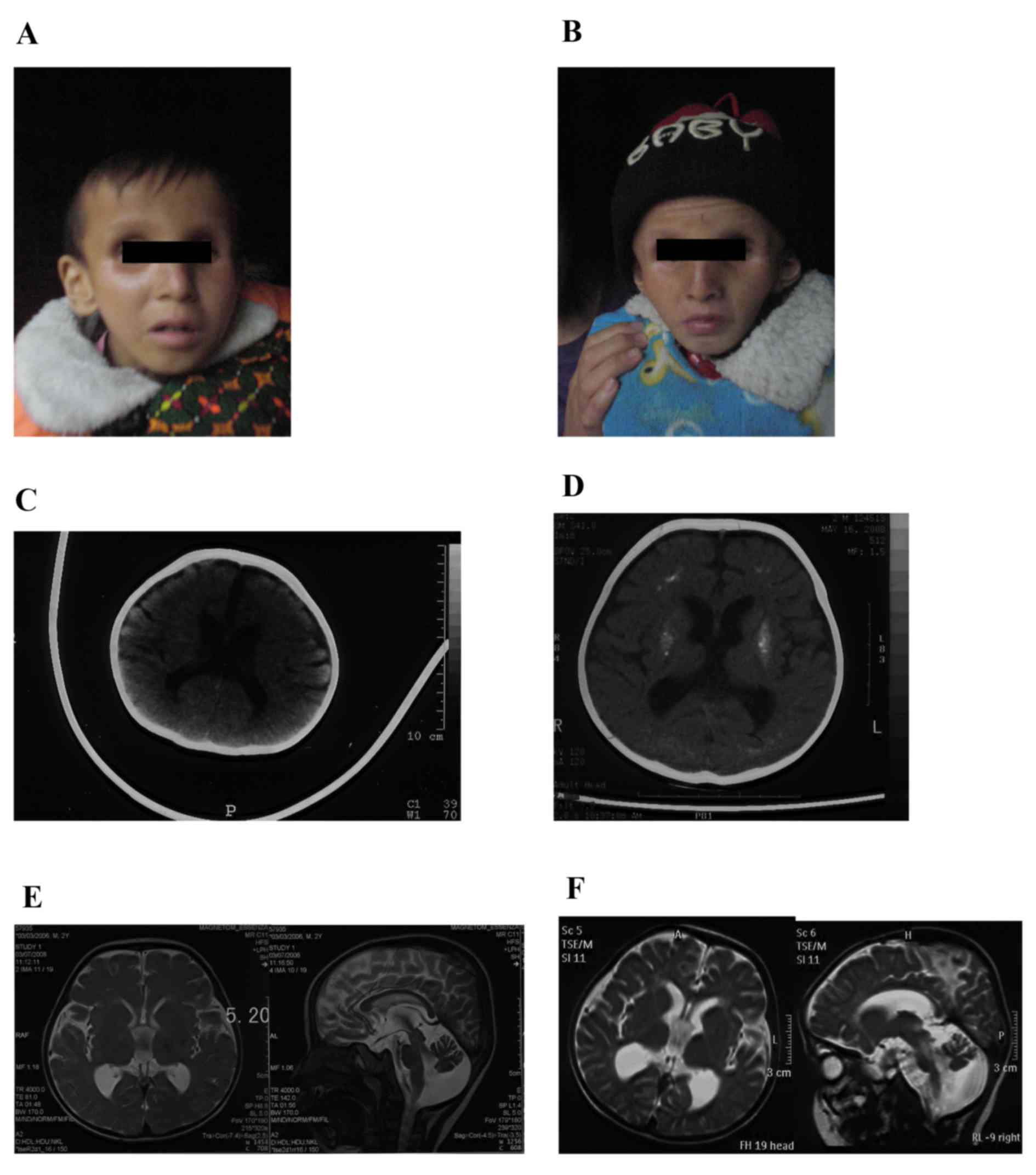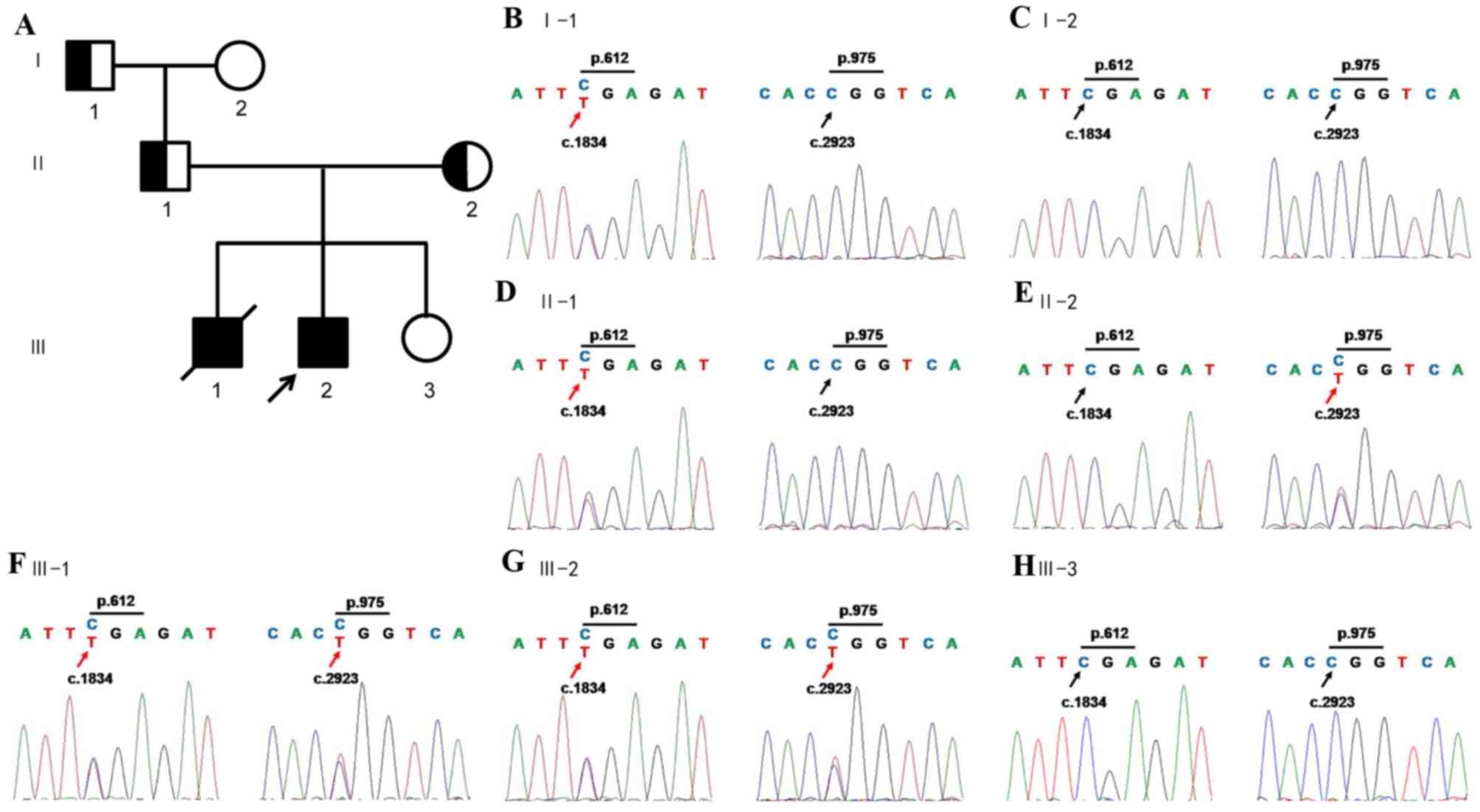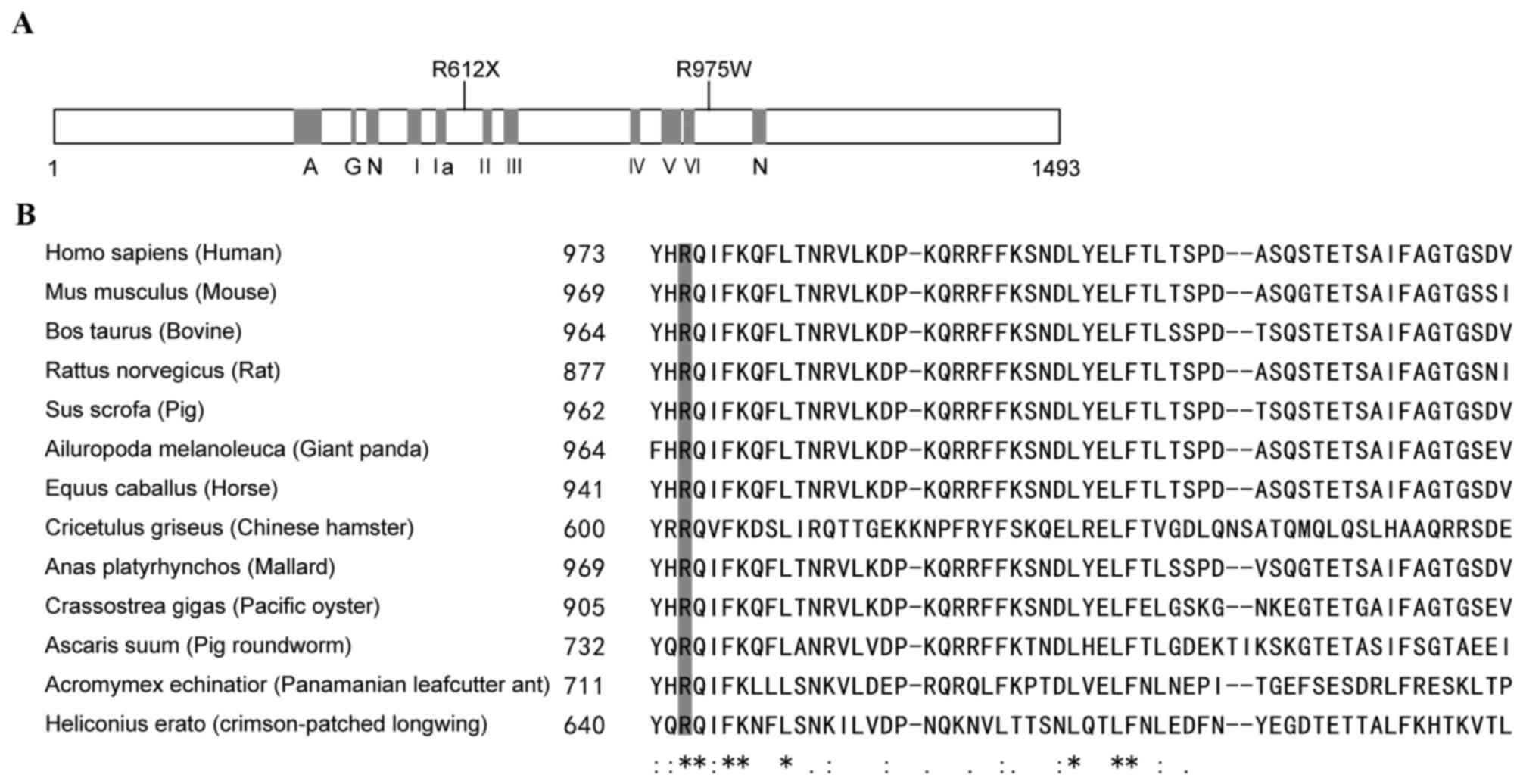|
1
|
Nance MA and Berry SA: Cockayne syndrome:
Review of 140 cases. Am J Med Genet. 42:68–84. 1992. View Article : Google Scholar
|
|
2
|
Kleijer WJ, Laugel V, Berneburg M, Nardo
T, Fawcett H, Gratchev A, Jaspers NG, Sarasin A, Stefanini M and
Lehmann AR: Incidence of DNA repair deficiency disorders in western
Europe: Xeroderma pigmentosum, Cockayne syndrome and
trichothiodystrophy. DNA Repair (Amst). 7:744–750. 2008. View Article : Google Scholar
|
|
3
|
Laugel V: Cockayne syndrome: The expanding
clinical and mutational spectrum. Mech Ageing Dev. 134:161–170.
2013. View Article : Google Scholar
|
|
4
|
Laugel V, Dalloz C, Durand M, Sauvanaud F,
Kristensen U, Vincent MC, Pasquier L, Odent S, Cormier-Daire V,
Gener B, et al: Mutation update for the CSB/ERCC6 and CSA/ERCC8
genes involved in Cockayne syndrome. Hum Mutat. 31:113–126. 2010.
View Article : Google Scholar
|
|
5
|
Rapin I, Lindenbaum Y, Dickson DW, Kraemer
KH and Robbins JH: Cockayne syndrome and xeroderma pigmentosum.
Neurology. 55:1442–1449. 2000. View Article : Google Scholar :
|
|
6
|
Cleaver JE, Lam ET and Revet I: Disorders
of nucleotide excision repair: The genetic and molecular basis of
heterogeneity. Nat Rev Genet. 10:756–768. 2009. View Article : Google Scholar
|
|
7
|
Laugel V, Dalloz C, Stary A, Cormier-Daire
V, Desguerre I, Renouil M, Fourmaintraux A, Velez-Cruz R, Egly JM,
Sarasin A and Dollfus H: Deletion of 5′ sequences of the CSB gene
provides insight into the pathophysiology of Cockayne syndrome. Eur
J Hum Genet. 16:320–327. 2008. View Article : Google Scholar
|
|
8
|
Colella S, Nardo T, Mallery D, Borrone C,
Ricci R, Ruffa G, Lehmann AR and Stefanini M: Alterations in the
CSB gene in three Italian patients with the severe form of Cockayne
syndrome (CS) but without clinical photosensitivity. Hum Mol Genet.
8:935–941. 1999. View Article : Google Scholar
|
|
9
|
Falik-Zaccai TC, Laskar M, Kfir N, Nasser
W, Slor H and Khayat M: Cockayne syndrome type II in a Druze
isolate in Northern Israel in association with an insertion
mutation inERCC6. Am J Med Genet A. 146A:1423–1429. 2008.
View Article : Google Scholar
|
|
10
|
Jaakkola E, Mustonen A, Olsen P, Miettinen
S, Savuoja T, Raams A, Jaspers NG, Shao H, Wu BL and Ignatius J:
ERCC6 founder mutation identified in Finnish patients with COFS
syndrome. Clin Genet. 78:541–547. 2010. View Article : Google Scholar
|
|
11
|
Horibata K, Iwamoto Y, Kuraoka I, Jaspers
NG, Kurimasa A, Oshimura M, Ichihashi M and Tanaka K: Complete
absence of Cockayne syndrome group B gene product gives rise to
UV-sensitive syndrome but not Cockayne syndrome. Proc Natl Acad Sci
USA. 101:pp. 15410–15415. 2004; View Article : Google Scholar :
|
|
12
|
Colella S, Nardo T, Botta E, Lehmann AR
and Stefanini M: Identical mutations in the CSB gene associated
with either Cockayne syndrome or the DeSanctis-cacchione variant of
xeroderma pigmentosum. Hum Mol Genet. 9:1171–1175. 2000. View Article : Google Scholar
|
|
13
|
Ghai SJ, Shago M, Shroff M and Yoon G:
Cockayne syndrome caused by paternally inherited 5Mb deletion of
10q11.2 and a frameshift mutation of ERCC6. Eur J Med Genet.
54:272–276. 2011. View Article : Google Scholar
|
|
14
|
Zhang H, Gao J, Ye J, Gong Z and Gu X:
Maternal origin of a de novo microdeletion spanning the ERCC6 gene
in a classic form of the Cockayne syndrome. Eur J Med Genet.
54:e389–e393. 2011. View Article : Google Scholar
|
|
15
|
Xin B and Wang H: Identification of two
novel ERCC6 mutations in old order amish with cockayne syndrome.
Mol Syndromol. 3:288–290. 2013.
|
|
16
|
Yu S, Chen L, Ye L, Fei L, Tang W, Tian Y,
Geng Q, Yi X and Xie J: Identification of two missense mutations of
ERCC6 in three Chinese sisters with Cockayne syndrome by whole
exome sequencing. PLoS One. 9:e1139142014. View Article : Google Scholar :
|
|
17
|
Newman JC, Bailey AD, Fan HY, Pavelitz T
and Weiner AM: An abundant evolutionarily conserved CSB-PiggyBac
fusion protein expressed in Cockayne syndrome. PLoS Genet.
4:e10000312008. View Article : Google Scholar :
|
|
18
|
Bailey AD, Gray LT, Pavelitz T, Newman JC,
Horibata K, Tanaka K and Weiner AM: The conserved Cockayne syndrome
B-piggyBac fusion protein (CSB-PGBD3) affects DNA repair and
induces both interferon-like and innate antiviral responses in
CSB-null cells. DNA Repair (Amst). 11:488–501. 2012. View Article : Google Scholar :
|
|
19
|
Weiner AM and Gray LT: What role (if any)
does the highly conserved CSB-PGBD3 fusion protein play in Cockayne
syndrome? Mech Ageing Dev. 134:225–233. 2013. View Article : Google Scholar :
|
|
20
|
Xin B and Wang H: Identification of two
novel ERCC6 mutations in old order amish with cockayne syndrome.
Mol Syndromol. 3:288–290. 2013.
|
|
21
|
Shehata L, Simeonov DR, Raams A, Wolfe L,
Vanderver A, Li X, Huang Y, Garner S, Boerkoel CF, Thurm A, et al:
ERCC6 dysfunction presenting as progressive neurological decline
with brain hypomyelination. Am J Med Genet A. 164:2892–2900. 2014.
View Article : Google Scholar :
|












